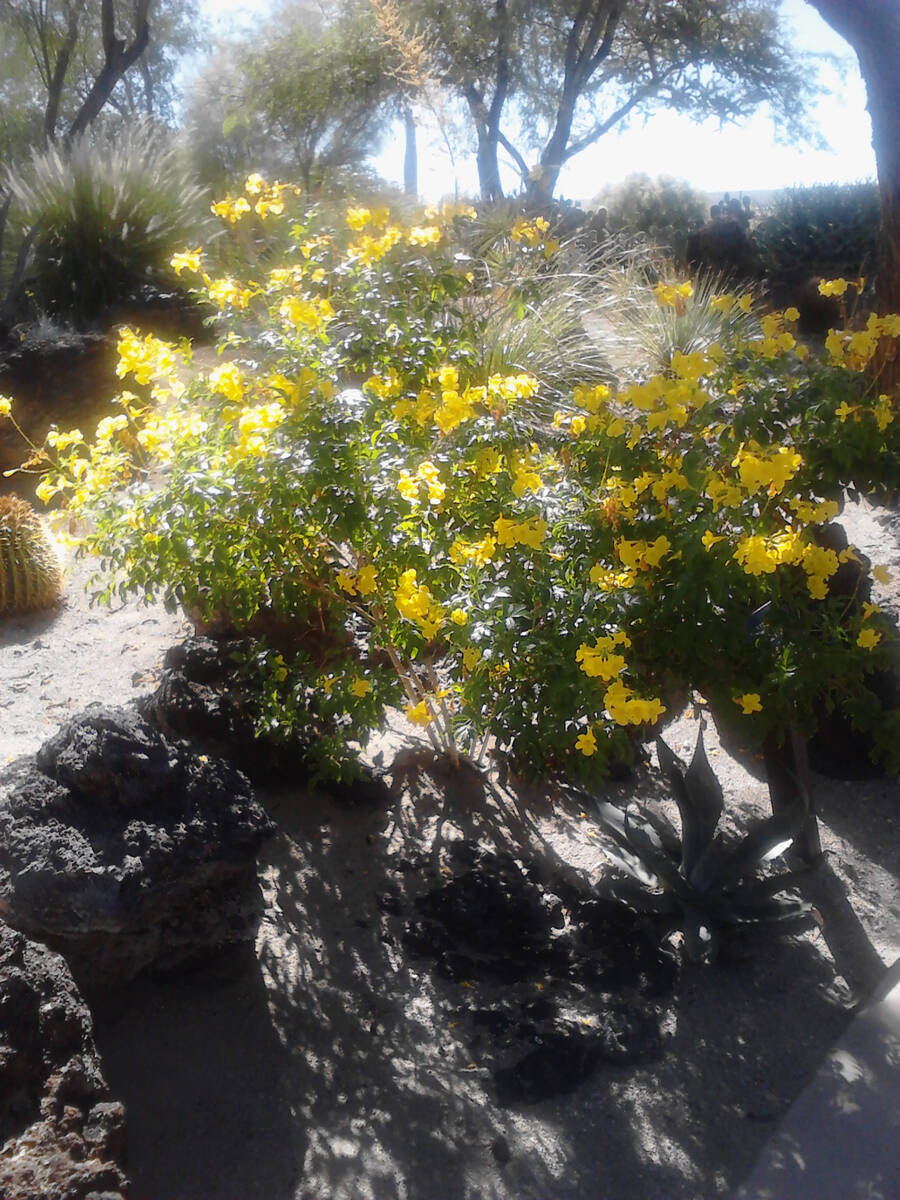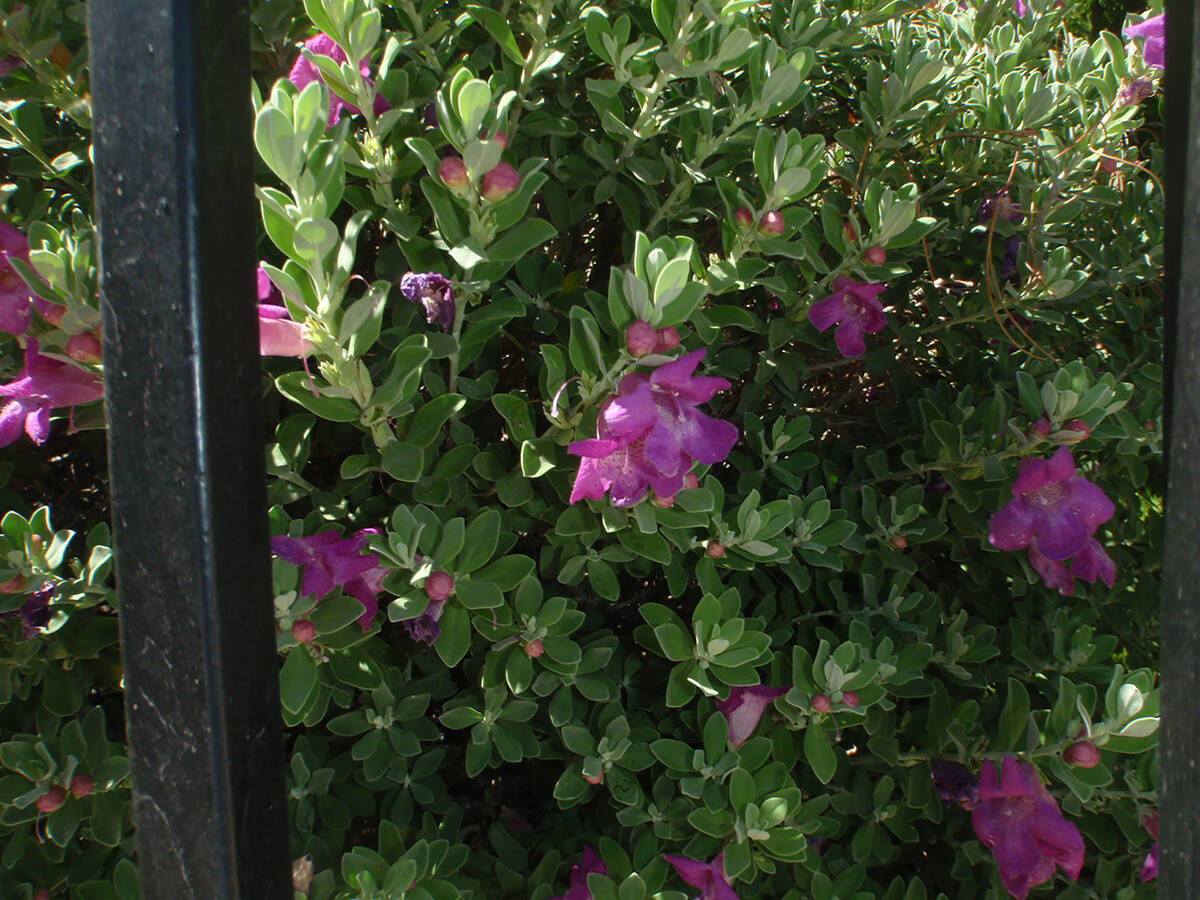What factors into how much water plants need?
There are two key factors in figuring out how much water plants need: what we know and what we observe.
First, let’s explore what we know. A tree growing where rain is plentiful will have roots about equal to its height but shallower than the top. (Compare plant growth to an upright wineglass.)
Roots are lazy. They will expend as little energy as possible to grow as big as possible.
If you placed a tree on its side and spun a circle with it, that would roughly represent the area where roots can grow. The amount of top growth in plants is about five to six times more than their roots. This is called the root-to-shoot ratio.
Desert plants (xeric) have more roots to capture rain. Their roots can be much larger (two to four times). Xeric trees are watered less often than mesic trees and should be on separate valves.
Tree roots die or fail to grow into areas without water. Roots don’t penetrate dry areas to seek out water. That is the reason that plant roots don’t recognize artificial boundaries such as lot lines. Roots grow wherever there is a good mixture of air and water. Your neighbor may or may not contribute to your irrigation. But that kind of help is not reliable.
Some extension services tell their master gardeners to cover the entire area under the tree canopy with water. That is ideal, but most homeowners aren’t willing to do that with large trees. Watering just half of that area is usually enough.
Keep plant numbers and size under control. How much water plants need can be determined but not without physically separating the plants. That’s why total landscape water use gives the homeowner more valuable information than individual plant water use.
Water newly planted trees and shrubs at the edge of where the roots are located. That is why I am not upset when drip emitters are close to the trunks of small plants during their first season. If root growth was good in the first year, the drip emitters should be moved during the second year.
Let’s talk about observations. Water should be released to the same spot in raised beds until harvest. Plant roots get used to a balance between air and water. Water moves horizontally an average of about 9 or 10 inches. That’s why drip emitters spaced 12 inches apart are too close except in raised beds. I believe 18 inches apart is better.
About half of a tree’s roots can be cut off, and the tree will still look good. That is one reason why just half of the area under a tree (for those over 10 feet tall) can be watered when they are mature.
Q: I’m working on a new backyard I purchased that has very mature oleanders. Most oleanders are thriving, but a few have scorched leaves. What’s the best treatment? Or is it from bacteria that can’t be cured?
A: The disease you are referring to has a common name: oleander leaf scorch. It is caused by bacteria spread by an insect called a leafhopper. If you have grapes, check those as well because it is also a disease of grapes, but with a different name: Pierce’s disease. Without enough water, though, the leaves of oleanders will scorch and look just like this disease.
The only way to really tell if it is oleander leaf scorch without sending samples to a plant pathologist is to water it and see if the plant produces new unscorched leaves. Oleander leaf scorch is not easily corrected.
If the scorched leaves persist, then replace the oleander. You have time as bacterial oleander leaf scorch spreads between oleanders when it’s hot, not during cooler weather. This disease is not left behind in the soil when you transplant.
Q: We bought a 3-foot-tall windmill palm a few years ago. It never grew, and this year when we got back from a vacation, there were basically no fronds left. The trunk was only around 12 inches in length. When I dug it up to replace it, around 40 bugs scurried from around the root area. The mature ones are around an inch long, darker bodies with the same black rear. Any idea what they are?
A: The pest you found looks like a small cockroach. I am not sure which one. Cockroaches are omnivorous. They also love to congregate near water. Cockroaches are decomposers; they help break things down faster. I know they are not pleasant to look at, but they help the soil environment in that way.
Windmill palms are very slow growing and only about 20 to 30 feet tall at maturity. If you like palms, it’s a good one for our climate and the size of our landscapes. But it must be watered like a landscape plant and surrounded by other plants.
Make sure that anything planted gets off to a good start. Dig the planting hole about three times wider than the container or roots. Amend the soil with organics, and ensure that whatever you are planting goes into the ground wet. Keep it wet for about two days or less until it’s ready to live without extra water.
Palms are pond plants. They grow best close to, but not in, water.
Q: Since Tecoma does well in our summer heat, I’m wondering if they can be pruned into a single-trunk tree? If I prune everything off except the main leader, will that grow into a single-trunk tree? Also, about how many years until it becomes a decent-sized tree?
A: Good idea. I would prune them as multi-trunk trees, not one trunk. Less work is involved. Leave three to five major stems coming from the base. Eliminate the rest. The plant may try to sucker from the base so remove new growth. Stay away from dwarf forms of this plant if you want it to look more like a tree.
There are two possible problems: low winter temperatures and sunburn. If the temperatures stay pleasant (not freezing) in the winter, you are home-free. This plant will freeze during cold winters. If nighttime temperatures drop into the mid-20s they will turn brown and freeze back. The nice thing about Tecoma, though, is that it grow back quickly if it does freeze.
The second problem is sunburn. Don’t prune it up too high. Leave it pruned to knee height. Leave some leaves on these plants so they can shade themselves.
I have suggested Green Cloud or Grey Cloud Texas rangers to do a similar thing. They will manage lower temperatures better than Tecoma. They grow a bit smaller, flower profusely and at 8 to 10 feet will still shade the windows and walls of a single-story home. Make sure they are planted at least 8 feet from the foundation. Water should be applied no closer to the home than 3 feet.
Most shrubs will grow into a small trees in three to four years with fertilizing frequently.
Bob Morris is a horticulture expert and professor emeritus of UNLV. Visit his blog at xtremehorticulture.blogspot.com. Send questions to Extremehort@aol.com.
































